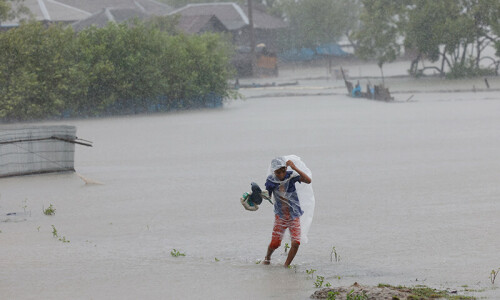LIN: Beneath the turquoise waters of Lake Ohrid, the “Pearl of the Balkans”, scientists have uncovered what may be one of Europe’s earliest sedentary communities, and are trying to solve the mystery of why it sheltered behind a fortress of defensive spikes.
A stretch of the Albanian shore of the lake once hosted a settlement of stilt houses some 8,000 years ago, archaeologists believe, making it the oldest lakeside village in Europe discovered to date.
Radiocarbon dating from the site puts it at between 6000 and 5800 BC.
“It is several hundred years older than previously known lake-dwelling sites in the Mediterranean and Alpine regions,” said Albert Hafner, a professor of archaeology from Switzerland’s University of Bern. “To our knowledge, it is the oldest in Europe,” he said.
The most ancient other such villages were discovered in the Italian Alps and date to around 5000 BC, said the expert in European Neolithic lake dwellings.
Hafner and his team of Swiss and Albanian archaeologists have spent the past four years carrying out excavations at Lin on the Albanian side of Lake Ohrid, which straddles the mountainous border of North Macedonia and Albania.
The settlement is believed to have been home to between 200 and 500, with houses built on stilts above the lake’s surface or in areas regularly flooded by rising waters.
Fortress of spikes
And it is slowly revealing some astonishing secrets. During a recent dive, archaeologists uncovered evidence suggesting the settlement was fortified with thousands of spiked planks used as defensive barricades.
“To protect themselves in this way, they had to cut down a forest,” said Hafner. But why did the villagers need to build such extensive fortifications to defend themselves? Archaeologists are still searching for an answer to the elusive question.
Researchers estimate that roughly 100,000 spikes were driven into the bottom of the lake off Lin, with Hafner calling the discovery “a real treasure trove for research”.
Lake Ohrid is one of the oldest lakes in the world and has been around for more than a million years.
Assisted by professional divers, archaeologists have been picking through the bottom of the lake often uncovering fossilised fragments of wood and prized pieces of oak.
Published in Dawn, August 12th, 2023














































Dear visitor, the comments section is undergoing an overhaul and will return soon.